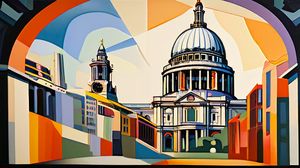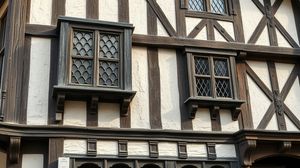
Fleet Street, located in the heart of the City of London, is renowned for its rich history and significant role in the British press industry. Once synonymous with the British newspaper industry, Fleet Street was the epicenter of journalism in the United Kingdom for centuries until the major newspapers relocated their offices in the 1980s.
This bustling street derives its name from the River Fleet, which once flowed above ground in the area before becoming one of London's many subterranean rivers. Crossing Fleet Street offers a chance to traverse centuries of history, with a unique blend of traditional and modern architecture showcasing London's evolution over the years.
An intriguing detail about Fleet Street is its association with the fictional character Sweeney Todd, the Demon Barber of Fleet Street. While there is no historical evidence of his existence, he has captivated audiences through stories and musicals, adding a dark folklore allure to the street.
Fleet Street is home to several hidden gems, such as the historic Ye Olde Cheshire Cheese, a pub that was rebuilt shortly after the Great Fire of London in 1666. This public house boasts a labyrinth of rooms and cellars, attracting visitors who are eager to soak in its old-world charm.
The street is also flanked by notable landmarks, including the Royal Courts of Justice, an architectural marvel in its own right. Visitors often find themselves drawn to the striking Gothic details and imposing presence of this dramatic legal complex, which continues to serve as a functioning court of law.
The significance of Fleet Street extends beyond journalism, encapsulating the essence of London's literary and cultural heritage. It has been a source of inspiration for numerous writers and artists, further immortalizing its place in the annals of history and imagination.

Making the Most of Your Visit:
If you're a history buff, make sure to take a stroll through some of the alleyways off Fleet Street. It's easy to get entranced by the main sights, but tucked away you'll find hidden corners with historical plaques and remnants of the area's bygone era that most visitors miss.
Don't forget to pop into Dr. Johnson's House! It's a bit of a walk from Fleet Street, but this 18th-century townhouse is where Samuel Johnson compiled his famous dictionary. It's small but packed with history and charm, perfect for those intrigued by literary tales.
When visiting the Royal Courts of Justice, try to catch a glimpse of the daily court proceedings. It's like a slice of real life drama, and unlike what you see on TV. The architecture is stunning, but seeing it in use is something else entirely.
Ye Olde Cheshire Cheese is not just about the pints; take your time to explore its nooks and crannies. Each room has its own character, and you never know who you might meet as you explore the labyrinthine pathways. Plus, the atmosphere is a delightful blend of authentic history and storytelling.
If you're visiting around lunchtime, swing by one of the traditional London sandwich shops dotting Fleet Street. It's a chance to eat like a local, offering a taste of the everyday Londoner's lunch with a bit of historical flair.

Visiting Times & Costs:
Fleet Street itself is a public thoroughfare in the City of London, open to visitors year-round, at any time of the day or night.
Access: As an open street, there are no entrance fees or tickets required to explore Fleet Street.
Accessibility: The street is generally accessible to those using wheelchairs or with limited mobility. However, some of the historic establishments, such as Ye Olde Cheshire Cheese, may not be fully accessible due to their age and architectural limitations, featuring narrow stairways and uneven flooring.
Individual attractions along Fleet Street, like the Royal Courts of Justice or Dr. Johnson's House, may have their own specific hours of operation, entry fees, and accessibility considerations. It is advisable to check these details beforehand for each specific site you wish to visit.

Address & Map:

Nearby:























